Tom Clancy - Debt of Honor
Здесь есть возможность читать онлайн «Tom Clancy - Debt of Honor» весь текст электронной книги совершенно бесплатно (целиком полную версию без сокращений). В некоторых случаях можно слушать аудио, скачать через торрент в формате fb2 и присутствует краткое содержание. Год выпуска: 1994, Жанр: Триллер, на английском языке. Описание произведения, (предисловие) а так же отзывы посетителей доступны на портале библиотеки ЛибКат.
- Название:Debt of Honor
- Автор:
- Жанр:
- Год:1994
- ISBN:нет данных
- Рейтинг книги:4 / 5. Голосов: 1
-
Избранное:Добавить в избранное
- Отзывы:
-
Ваша оценка:
- 80
- 1
- 2
- 3
- 4
- 5
Debt of Honor: краткое содержание, описание и аннотация
Предлагаем к чтению аннотацию, описание, краткое содержание или предисловие (зависит от того, что написал сам автор книги «Debt of Honor»). Если вы не нашли необходимую информацию о книге — напишите в комментариях, мы постараемся отыскать её.
Debt of Honor — читать онлайн бесплатно полную книгу (весь текст) целиком
Ниже представлен текст книги, разбитый по страницам. Система сохранения места последней прочитанной страницы, позволяет с удобством читать онлайн бесплатно книгу «Debt of Honor», без необходимости каждый раз заново искать на чём Вы остановились. Поставьте закладку, и сможете в любой момент перейти на страницу, на которой закончили чтение.
Интервал:
Закладка:
Boris Scherenko was as busy as he'd ever expected to be. His assignment was supposed to be a nice, quiet, commercial-spying post, learning industrial techniques that his country might easily duplicate, more a business function than one of pure espionage. The loss of Oleg Lyalin's THISTLE network had been a professional catastrophe that he had labored for some time to correct without great success. The traitor Lyalin had been a master at insinuating himself into business operations while he himself had worked to effect a more conventional penetration of the Japanese government organs, and his efforts to duplicate the former's achievements had barely begun to bear fruit when his tasking had changed back to something else entirely, a mission as surprising to him as the current situation doubtless was to the Americans who had been so badly stung by their erstwhile allies. Just one more truism that the Americans had allowed themselves to forget. You couldn't trust anyone.
The package just delivered on his desk was at least easy to work with: two frames of thirty-five-millimeter film, black and white, already developed as a photographic negative. It was just a matter of peeling off the gray tape and unfolding it, a task that took some minutes. As sophisticated as his agency was, the actual work of espionage was often as tedious as assembling a child's birthday toys. In this case, he used a pocket knife and a bright light to remove the film, and nearly cut himself in the process. He placed the two frames in cardboard holders, which went one at a time into a slide-viewer.
The next task was to transcribe the data onto a paper pad, which was just one more exercise in tedium. It was worth it, he saw at once. The data would have to be confirmed through other sources, but the news was good.
"There's your two cars," the AMTRAK executive said. It had been so obvious a place to look that a day had been required to realize it. The two oversized flatcars were at the Yoshinobu launch facility, and beside them were three transporter-containers for the SS-19/H-11 booster, just sitting there in the yard. "This might be another one, sticking out of the building."
"They have to have more than two, don't they?" Chris Scott asked.
"I would," Betsy Fleming replied. "But it could just mean a place to stash the cars. And it's the logical place."
"Here or at the assembly plant," Scott agreed with a nod. Mainly they were waiting now for nonvisual data. The only KH-I2 satellite in orbit was approaching Japan and already programmed to look at one small patch of a valley. The visual information had given them a very useful cue. Another fifty meters of the rail spur had disappeared from view between one KH-n pass and another. The photos showed the catenary towers ordinarily used for stringing the overhead power lines needed for electrically powered trains, but the towers did not have wires on them. They had possibly been erected to make the spur look normal to commuters who traveled the route in the Bullet Trains, just one more exercise in hiding something in plain sight.
"You know, if they'd just left it alone…" the AMTRAK guy said, looking at the overheads again.
"Yeah." Betsy responded, checking the clock. But they hadn't. Somebody was hanging camouflage netting on the towers, just around the first turn in the valley. The train passengers wouldn't notice, and, given slightly better timing, the three of them wouldn't have either. "If you were doing this, what would you do next?"
"To hide it from you guys? That's easy," the executive said. "I'd park track-repair cars there. That way it would look ordinary as hell, and they have the room for it. They should have done it before. Do people make mistakes like this all the time?"
"It isn't the first," Scott said.
"And now you're waiting for what?" the man asked.
"You'll see."
Launched into orbit eight years earlier by the Space Shuttle Atlantis, the TRW-built KH-12 satellite had actually survived far beyond its programmed life, but as was true of many products made by that company—the Air Force called it "TR-Wonderful"—it just kept on ticking. The radar-reconnaissance satellite was completely out of maneuvering fuel, however, which meant you had to wait for it to get to a particular place and hope that the operating altitude was suitable to what you wanted.
It was a large cylindrical craft, over thirty feet in length, with immense "wings" of solar receptors to power the onboard Ku-band radar. The solar cells had degraded over the years in the intense radiation environment, allowing only a few minutes of operation per revolution. The ground controllers had waited what seemed a long time for this opportunity. The orbital track was northwest-to-southeast, within six degrees of being directly overhead, close enough to see straight down into the valley. They already knew a lot. The geological history of the place was clear. A river now blocked with a hydroelectric dam had cut the gorge deep. It was more canyon than valley at this point, and the steep sides had been the deciding factor in putting the missiles here. The missiles could launch vertically, but incoming warheads would be blocked from hitting them by the mountains to east and west. It didn't make any difference whose warheads they were. The shape and course of the valley would have had the same effect on Russian RVs as Americans'. The final bit of genius was that the valley was hard rock. Each silo had natural armor. For all those reasons, Scott and Fleming had bet much of their professional reputations on the tasking orders for the KH-12.
"Right about now, Betsy," Scott said, checking the wall clock.
"What exactly will you see?"
"If they're there, we'll know it. You follow space technology?" Fleming asked.
"You're talking to an original Trekkie."
"Back in the 1980's NASA orbited a mission, and the first thing they downloaded was a shot of the Nile delta, underground aquifers that feed into the Mediterranean Sea. We mapped them."
"The same one did the irrigation canals down in Mexico, right, the Mayans, I think. What are you telling me?" the AMTKAK official replied.
"It was our mission, not NASA's. We were telling the Russians that they couldn't hide their silos from us. They got the message, too," Mrs. Fleming explained. Right about then the secure fax machine started chirping. The signal from the KH-12 had been crosslinked to a satellite in geostationary orbit over the Indian Ocean, and from there to the U.S. mainland. Their first read on the signals would be unenhanced, but, they hoped, good enough for a fast check. Scott took the first image off the machine and set it on the table under a bright light, next to a visual print of the same place.
"Tell me what you see."
"Okay, here's the mainline…oh—this thing picks up the ties. The rails are too small, eh?"
"Correct." Betsy found the spur line. The concrete rail ties were fifteen centimeters in width, and made for a good, sharp radar return that looked like a line of offset dashes.
"It goes quite a way up the valley, doesn't it?" The AMTRAK guy's face was down almost on the paper, tracing with his pen. "Turn, turn. What are these?" he asked, touching the tip to a series of white circles.
Scott placed a small ruler on the sheet. "Betsy?"
"Dense-packed it, too. My, aren't we clever. It must have cost a fortune to do this."
"Beautiful work," Scott breathed. The rail spur curved left and right, and every two hundred meters was a silo, not three meters away from the marching ranks of rail ties. "Somebody really thought this one through."
"You lost me."
"Dense-pack," Mrs. Fleming said. "It means that if you attempt to hit the missile field, the first warhead throws so much debris into the air that the next warhead gets trashed on the way in."
Читать дальшеИнтервал:
Закладка:
Похожие книги на «Debt of Honor»
Представляем Вашему вниманию похожие книги на «Debt of Honor» списком для выбора. Мы отобрали схожую по названию и смыслу литературу в надежде предоставить читателям больше вариантов отыскать новые, интересные, ещё непрочитанные произведения.
Обсуждение, отзывы о книге «Debt of Honor» и просто собственные мнения читателей. Оставьте ваши комментарии, напишите, что Вы думаете о произведении, его смысле или главных героях. Укажите что конкретно понравилось, а что нет, и почему Вы так считаете.
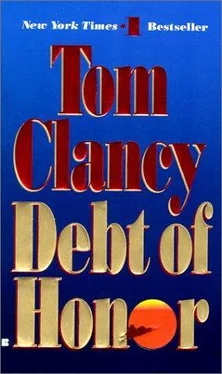
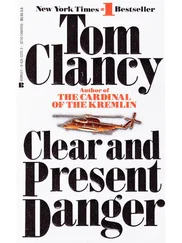

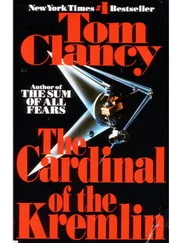

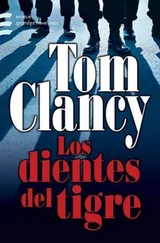
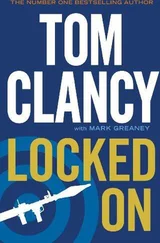
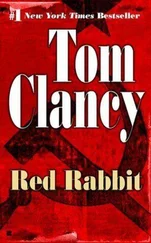

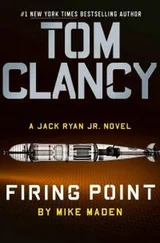
![Александр Ирвин - Tom Clancy’s The Division 2. Фальшивый рассвет [litres]](/books/417744/aleksandr-irvin-tom-clancy-s-the-division-2-falsh-thumb.webp)
